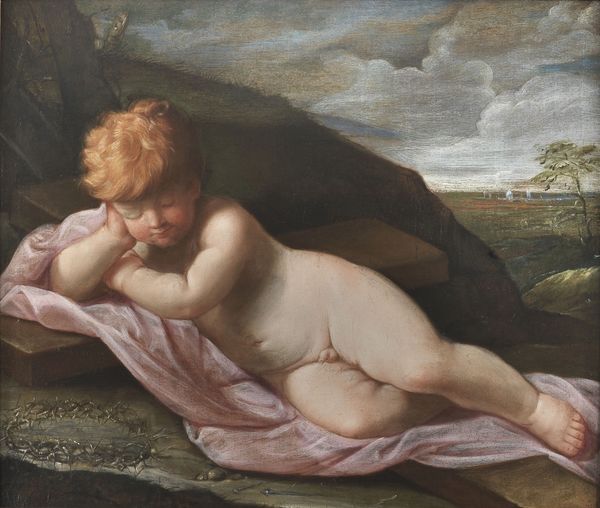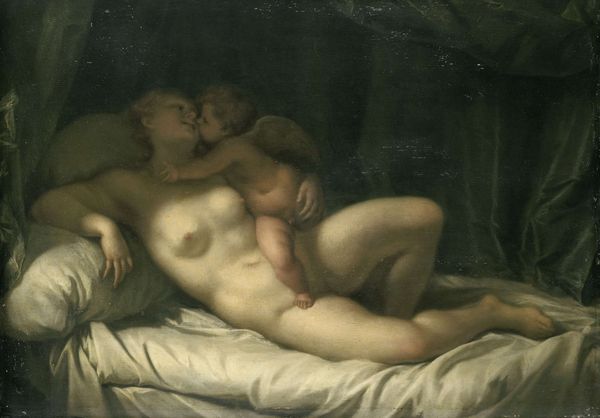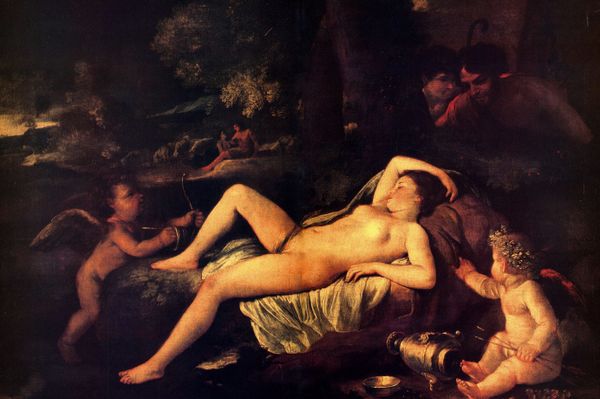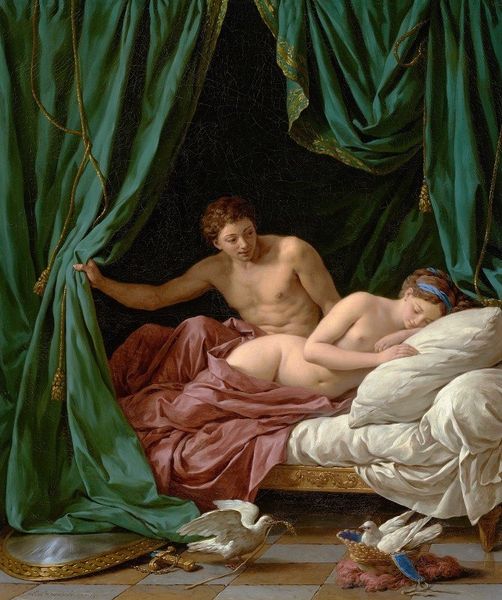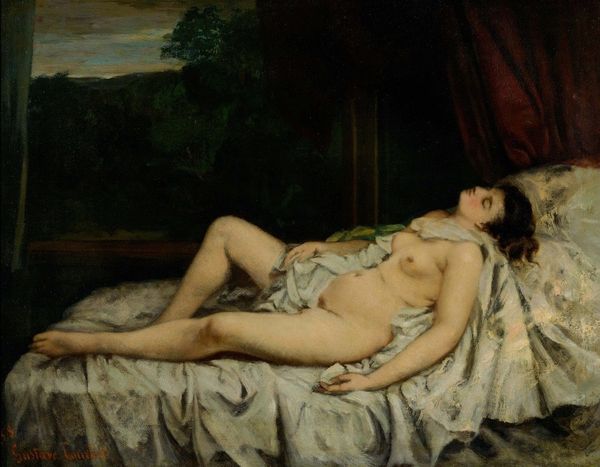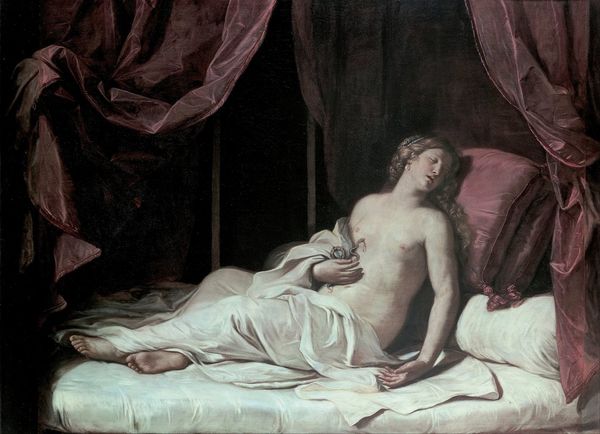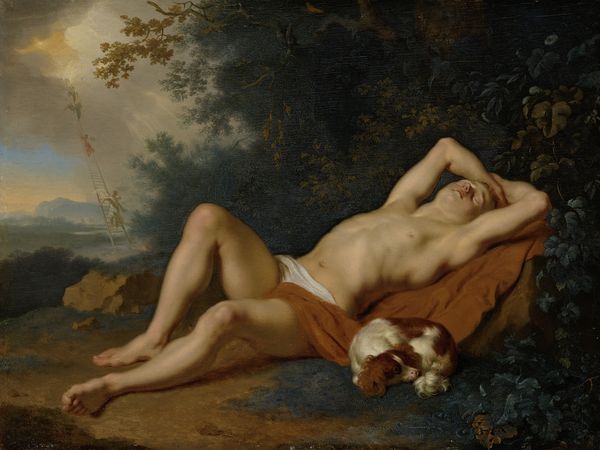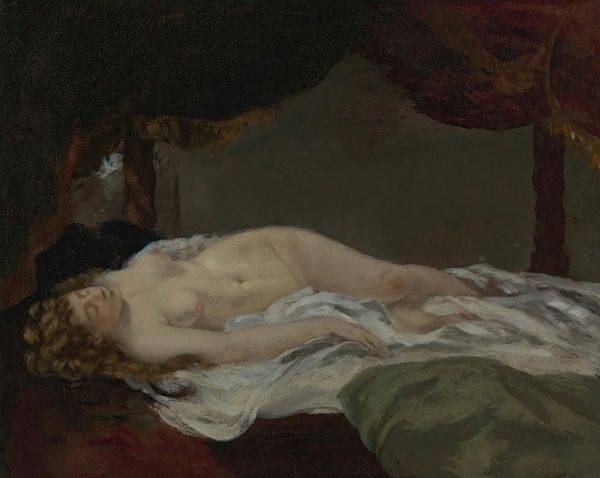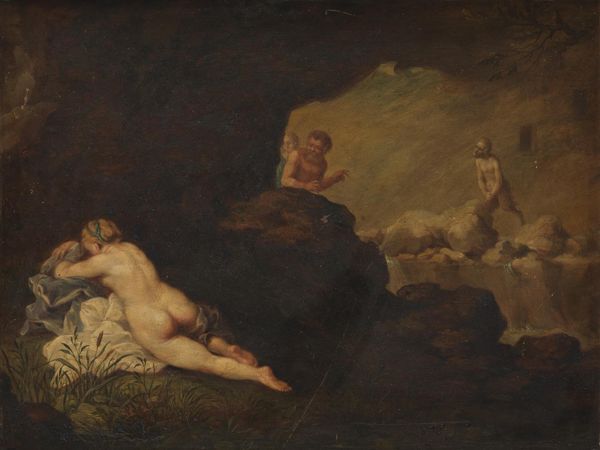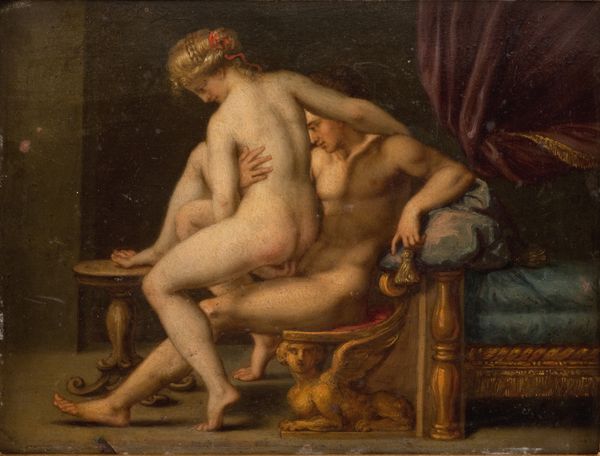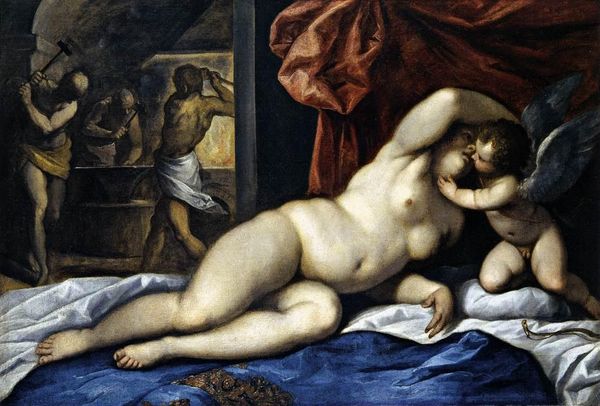
Dimensions: height 30.6 cm, width 41.3 cm, weight 2.9 kg, height 39.9 cm, width 50.2 cm, thickness 4.8 cm
Copyright: Rijks Museum: Open Domain
Jean-Étienne Liotard made this artwork in the 18th century using pastels on parchment. It is a really interesting medium, because pastels are basically pure pigment, the same stuff that gives paint its color, but without much binder. The effect is velvety, almost like looking at a wall that has been freshly painted with matte paint. But because pastel is so fragile, it requires a high level of skill and precision. Every mark counts. You can’t rework it endlessly like you could with oils. Look at the way that Liotard has built up the form of the nymph’s body, with delicate strokes of pink and cream. You can almost feel the softness of her skin. And consider the way the artist had to build up the composition itself, layer upon layer of pastel dust. This was a laborious, time-consuming process, one that demanded patience and control. The result is a work that seems effortless but is actually the product of considerable labor. It shows how close observation and careful technique can turn simple materials into something truly special.
Comments
rijksmuseum about 2 years ago
⋮
Liotard was particularly proud of owning the large (now lost) painting he here copied in pastel. He believed it to be by Titian, even though it was closer to compositions by Anthony van Dyck, and he made several copies of it, including a print. This one is unusual in that the pastels have been applied directly to the bare wood.
Join the conversation
Join millions of artists and users on Artera today and experience the ultimate creative platform.
